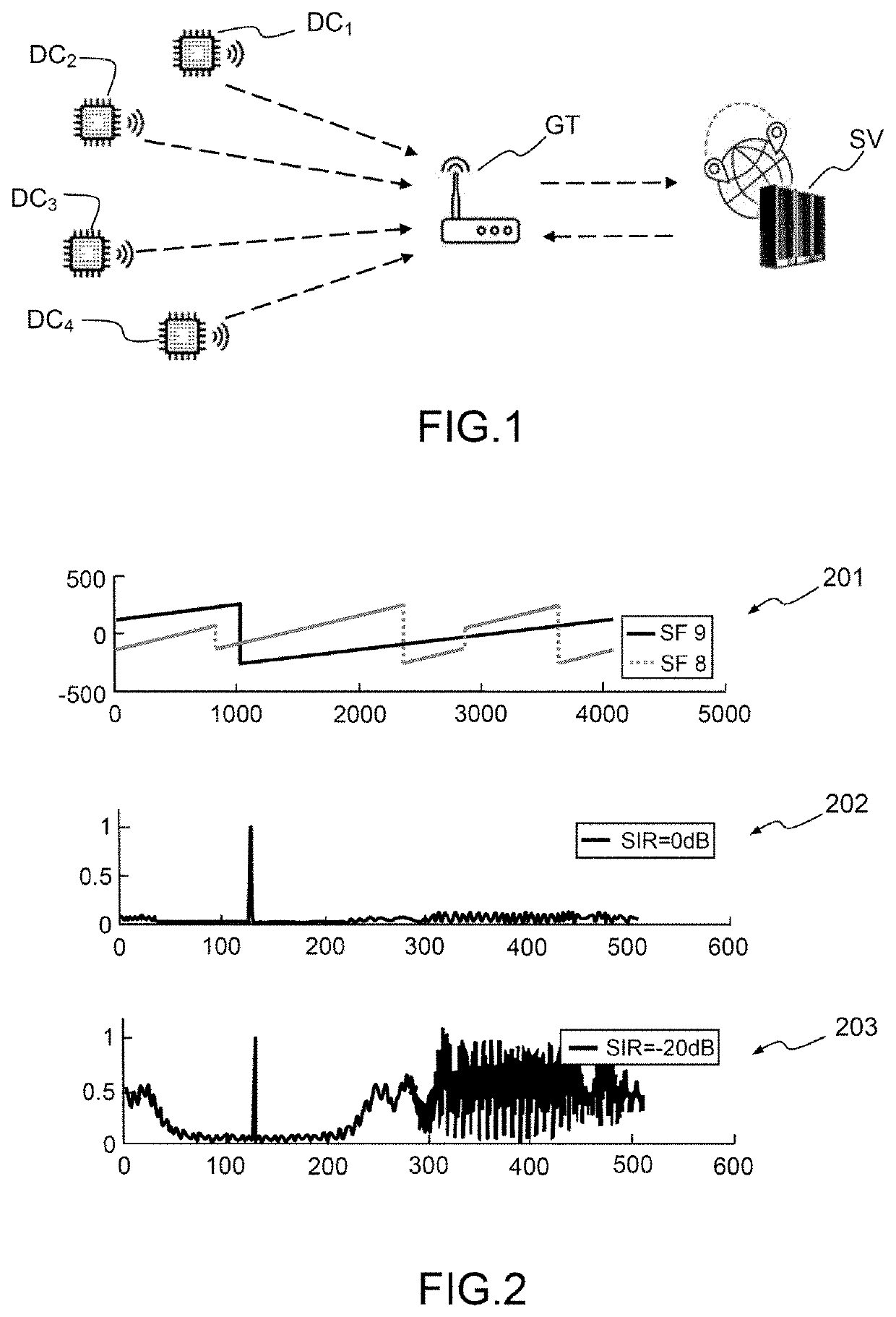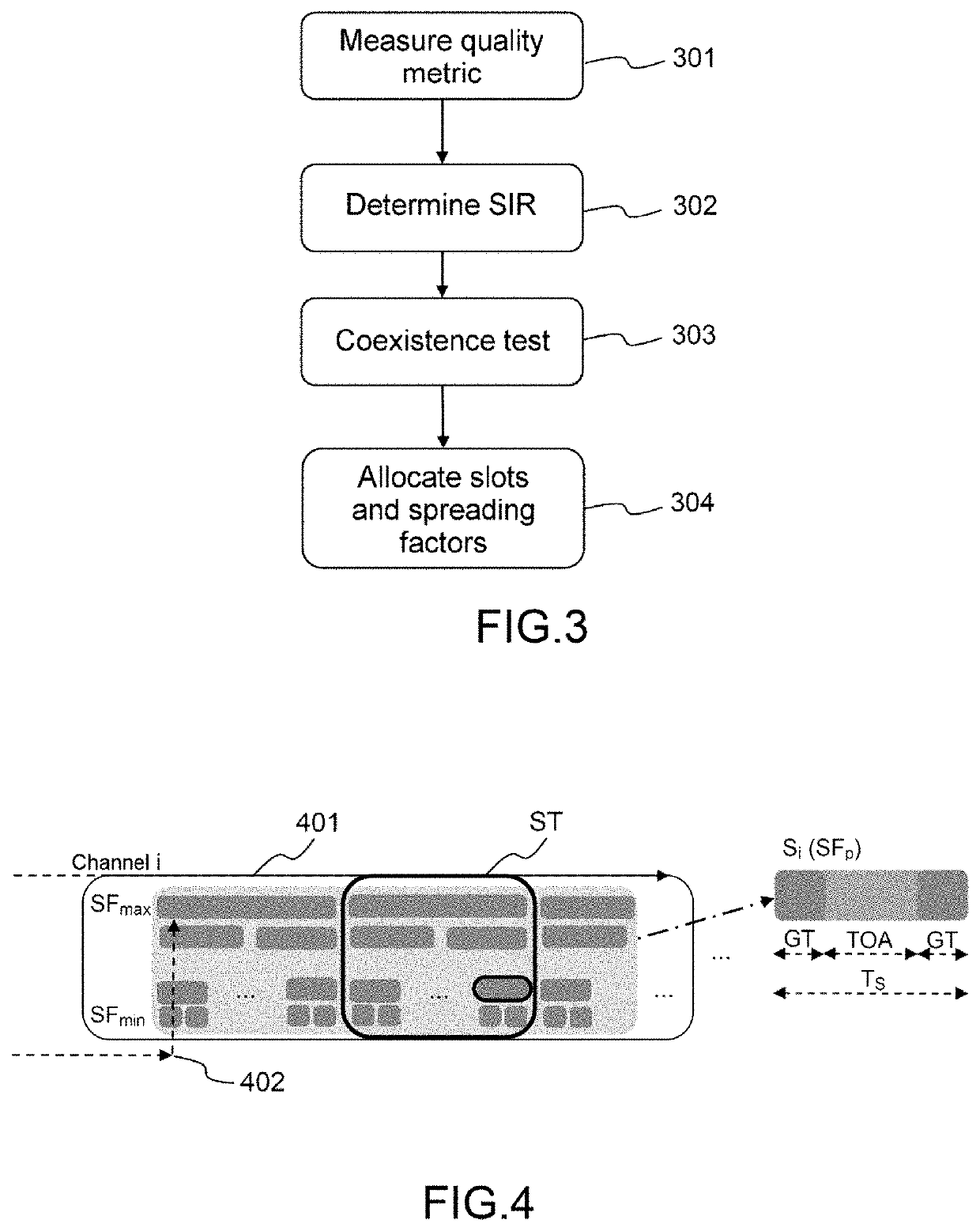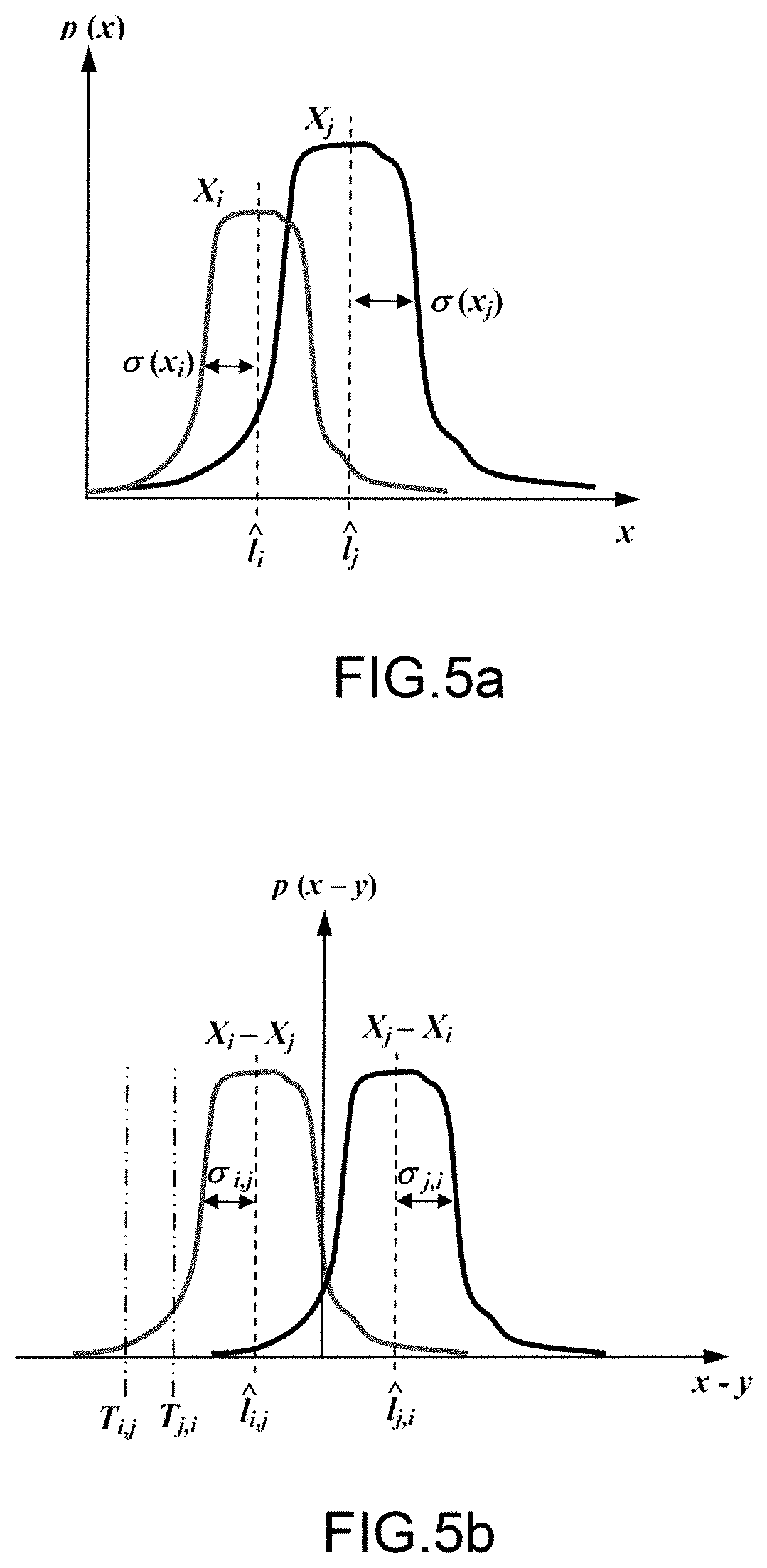Method for allocating resources for a spread-spectrum communication system
- Summary
- Abstract
- Description
- Claims
- Application Information
AI Technical Summary
Benefits of technology
Problems solved by technology
Method used
Image
Examples
Embodiment Construction
[0058]The invention is described in the context of the LoRa™ waveform, which uses CSS spreading. Without loss of generality, the invention also applies to other waveforms that implement a spread-spectrum technique using spreading codes that are not perfectly orthogonal.
[0059]FIG. 1 outlines one example of a communication system to which the invention applies. Several communicating devices DC1, DC2, DC3, DC4 (connected objects, terminals, sensors or the like) establish communication links with a server SV via at least one network access gateway GT.
[0060]Each communicating device is configured so as to establish communication using a given spreading factor from among several spreading factors.
[0061]The modulation that is used is frequency scanning modulation (chirp spread spectrum, CSS) as specified by the LoRa™ waveform. The principle of CSS is described notably in reference [3].
[0062]In summary, this type of spread spectrum uses signals called “chirps” that are frequency-modulated s...
PUM
 Login to View More
Login to View More Abstract
Description
Claims
Application Information
 Login to View More
Login to View More - R&D
- Intellectual Property
- Life Sciences
- Materials
- Tech Scout
- Unparalleled Data Quality
- Higher Quality Content
- 60% Fewer Hallucinations
Browse by: Latest US Patents, China's latest patents, Technical Efficacy Thesaurus, Application Domain, Technology Topic, Popular Technical Reports.
© 2025 PatSnap. All rights reserved.Legal|Privacy policy|Modern Slavery Act Transparency Statement|Sitemap|About US| Contact US: help@patsnap.com



